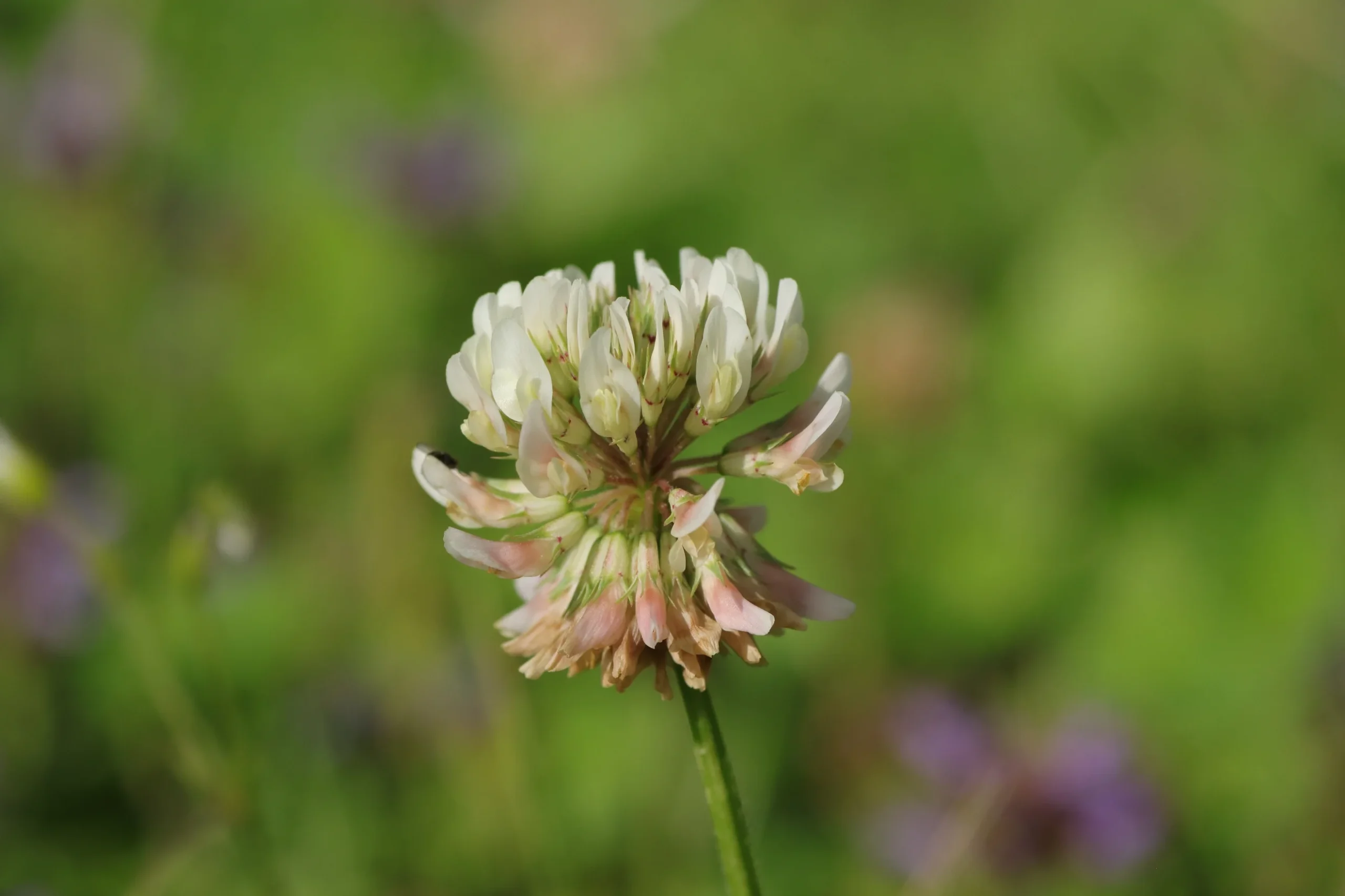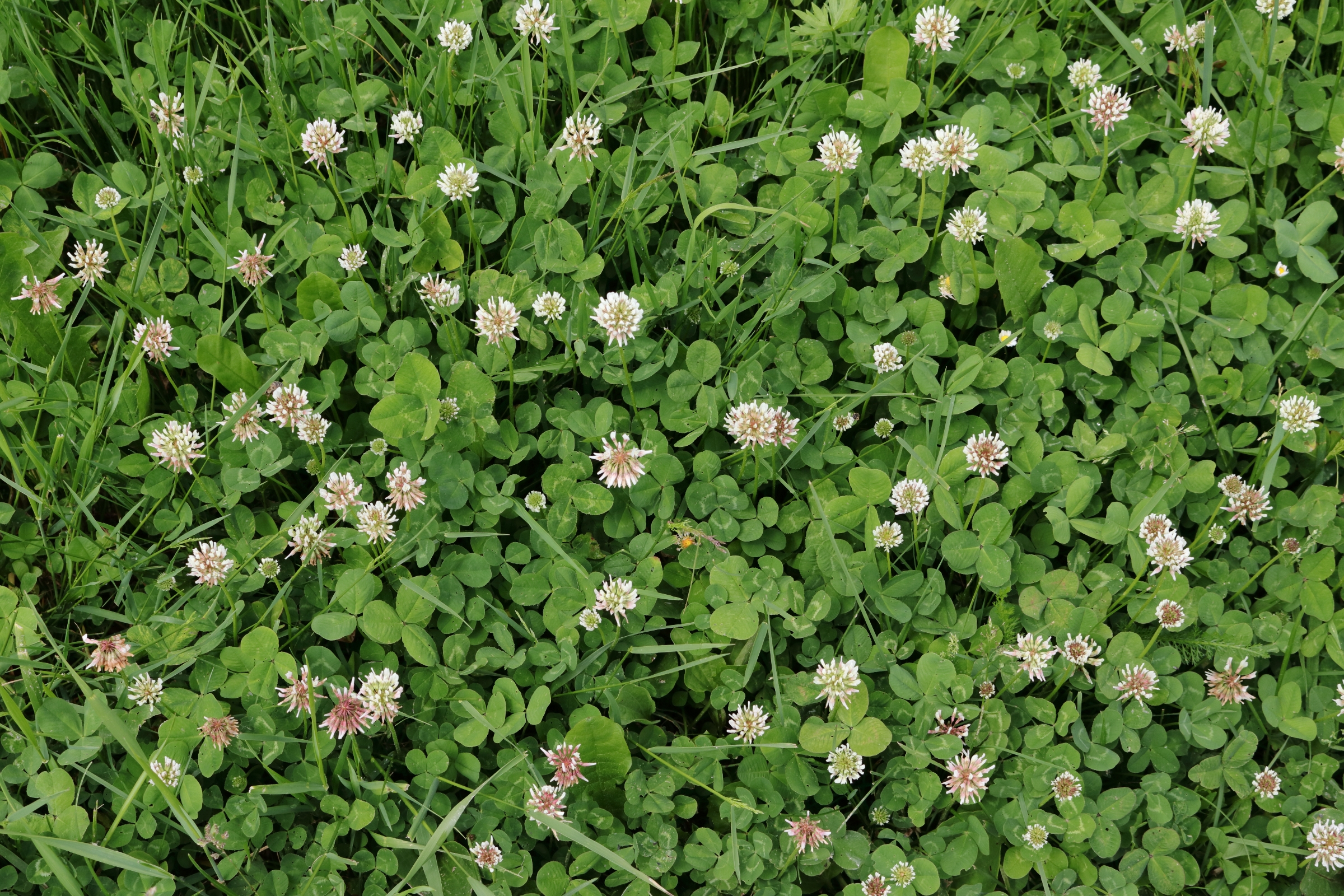The „white clover” is one of the best-known clovers in our gardens and meadows. It is also considered to be a true bee magnet.



Occurrence and distribution: The white clover is one of the native clover species. It grows on meadows, pastures (e.g. greasy pastures) and is also partly used on fields as a nitrogen-fixing intermediate crop. This clover can also be found along roadsides and in gardens / parks. The plant has no special soil requirements and is widespread throughout Germany, Britain and Europe. The plant can be found both in the plains and in the mountains.
Plant description
Growth form: It is a perennial, creeping plant. The flowers stand upright from the low-lying stems. While the leaves also have an upright growth with their stalks. The stem allows individual plants to spread up to a metre on the ground. This is also one of the plant’s spreading methods. Frequent grazing or mowing in the home garden encourages this species. The plant can reach a growth height of between 3 and 20 cm (1 in to 8 in). The roots can reach a depth of up to 70 cm (2 ft 3 in).
Leaves: The leaves of the white clover have a trident fingered structure and consist of three individual, oval leaf parts. The leaves are dark green on the upper and lower sides. In addition, a triangular white stripe forms on most of the leaves. The midrib is clearly visible on the individual leaf parts. Rarely, leaves with 4 or more leaf parts are formed. The leaf stalk can reach a length of up to 20 cm. The leaf edge is slightly toothed.
Flowers: The inflorescences have a white colouring and consist of a large number of individual flowers. These have a white colouring during the flowering period. After fading this changes to light brown. The inflorescences can reach a diameter of between 1.5 and 2.5 cm (0.5 in to 1 in) and consist of 40 to 80 individual flowers. Single hermaphrodite flowers are cygomorphic and consist of one larger petal and several smaller, compound petals. The flowers sit spherically on small stems. They are mainly pollinated by bees, bumblebees and butterflies. The flowering period is from May to September.
Fruits: The fruits consist of a legume, which has a linear structure. This develops from the pollinated flowers after withering. Between 3 and 4 seeds are formed per fruit. The small seeds are kidney-shaped and have a yellow to orange colour.
Agricultural use
Agricultural use: In agriculture, the white clover is often used as a fodder plant for the production of silage and hay in combination with sweet grasses. Due to the nodule bacteria on its roots, white clover can add nitrogen to the soil and is thus used as an interseed in uncultivated fields. In agriculture, however, various cultivars are used for this purpose. Its function as a “weed suppressant” is also highly valued in some cases. Because where clover spreads, “weeds” are less likely to appear in the fields. Clover is also considered to be very rich in protein and is therefore a source of energy in cattle feed.
Use in beekeeping: Due to the rich nectar and pollen supply, the plant is considered as a great food source for honey bees. The pollen colour is light brown.
Name Origin & Folk Names
Folk names: In the folk dialect, the white clover is sometimes also known by the following names, “Kriechklee” (creeping clover) or also “Lämmerklee” (lambs’ clover).
Name Origin: The botanical genus name “Trifolium” is derived from the three-parted leaves. This is also reflected in the parts of the name “tri” – meaning three – and “folium” – meaning leaf. The botanical species name “repens” can be translated into english as creeping.
Traditions around the clover
Traditions around St. Patrick from Ireland: The clover with it’s leaves is also represented on the coat of arms of Ireland. According to tradition, St. Patrick explained the divine Trinity to the Irish on the basis of the shape of the clover. Today, St. Patrick is the patron saint of miners, blacksmiths and barbers and is one of the national saints. St. Patrick’s Day is also a holiday dedicated to the saint and thus also to the clover.
Four-leaf clover: The four-leaf clover has always been considered a sign of good luck. Scientifically, the chance of finding a four-leaf clover is 1 in 1000. Especially on New Year’s Day, four-leaf clovers are given as a sign of good luck in the New Year.
Endangerment of the plant
Endangerment of the plant: The white clover is classified as non-endangered on the German Red List.
Distribution codes: A, AV, M1, M2, F, K